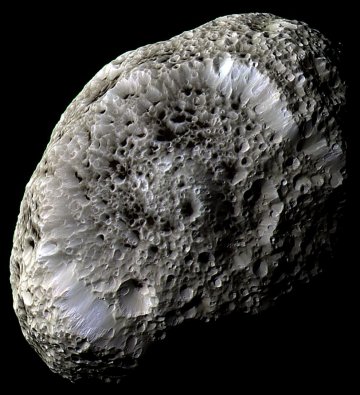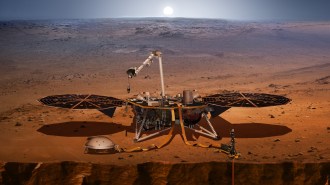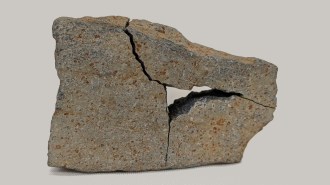Saturnian sponge
The first close-up portrait of Saturn’s icy, tumbling moon Hyperion reveals a spongy-looking surface unlike that of any other known moon. Recorded by the Cassini spacecraft, the spongelike appearance might be the result of closely packed craters that have retained their clean shape, says Cassini researcher Peter Thomas of Cornell University. The debris from impacts that excavated the craters doesn’t seem to have fallen back into the depressions as it has on other moons. The gravitational influence of nearby Titan, Saturn’s largest moon, may prevent such filling, Thomas notes.

Cassini snapped this image of Hyperion, which has a diameter of 266 kilometers, on Sept. 26 as the spacecraft swooped within 500 km of the moon, the closest that the probe is expected to come during the 4-year mission.







